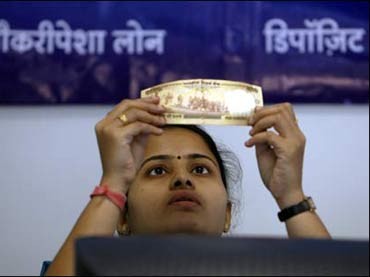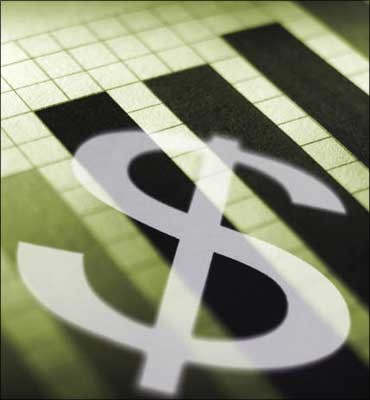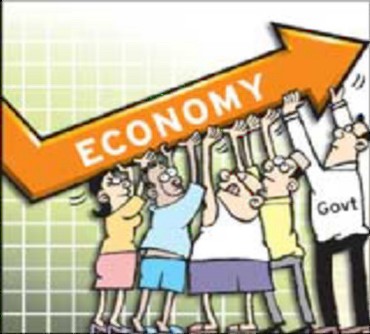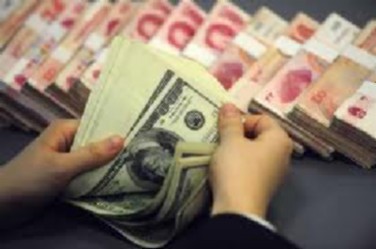 | « Back to article | Print this article |
IMF's 'Yes, Minister' approach
Life is becoming more confusing. After being repeatedly told how great lower inflation is for growth and the poor, the current finance minister has now repeated what his predecessor said a few weeks back
"Inflation can be tamed, but it will mean the country will have to make do with a much lower growth rate" (The Economic Times, April 14, 2011).
Such candour is refreshing, and it is high time that we stop pretending otherwise. And, let us not overlook the connection between growth and job creation.
It is implicit in the finance minister's remarks that monetary policy and the level of interest rates have an impact on growth and job creation.
Click NEXT to read more...
IMF's 'Yes, Minister' approach
One wonders when the authorities would be equally candid in respect of the other price of money, namely its exchange rate.
Recently, the Reserve Bank of India has come out with a research paper (The implications of renminbi revaluation on India's trade - A study) that analyses the impact of China's exchange rate policy on the huge and burgeoning bilateral trade surplus vis- -vis India.
The paper argues that "by keeping RMB undervalued it invariably and distinctly provides competitive advantage over its trade competitors and trade partners, including India."
Fair enough, but the paper's conclusions are insipid: diversify imports and increase labour productivity.
Click NEXT to read more...
IMF's 'Yes, Minister' approach
The research paper has shied from the impact of a 25 per cent appreciation (in real terms) of the Indian rupee in dollar terms of the last two fiscal years on the competitiveness of India's tradeables sector, particularly vis- -vis China.
Perhaps such reticence should not be surprising, given that, following the Anglo-Saxon propagated myths, we have been putting great faith in the virtues of a market-determined exchange rate for the last two years, in a complete reversal of the policies we had so successfully followed for the previous two decades.
In the process, we have also put our signature to the meaningless G20 communiqu s on the issue of global imbalances and the indicators to be monitored. Perhaps the exchange rate is too "holy" a subject for candid comment in public.
The great virtues of a liberal capital account and market-determined exchange rates have been propagated by the International Monetary Fund (IMF) for three decades now -overlooking all the evidence and cases on the ground, from Mexico in 1994 to Iceland in 2008, and many in between.
Click NEXT to read more...
IMF's 'Yes, Minister' approach
Recent headlines in the world's most respected financial dailies made me wonder whether the Emperor is really going to wear new clothes: "IMF gives ground on capital controls" (Financial Times, April 6, 2011) and "IMF reverses position on capital controls" (The Wall Street Journal, April 7, 2011).
After downloading the research paper (Capital Inflows: the Role of Controls, February 2011) on which the April 2011 press release was based, I was disabused of the notion.
It starts with a highly questionable assumption that "the benefits from a free flow of capital across borders are similar to the benefits from free trade."
This is, to my mind, a completely wrong assumption. In fact, market-determined exchange rates convert what is "a unit of account, a store for value, a medium of exchange" into a commodity, with its price changing minute to minute, benefiting the currency trader/speculator, often at the cost of the real economy (which, of course has no mention in the paper).
Click NEXT to read more...
IMF's 'Yes, Minister' approach
A key conclusion of the paper is that, "if the economy is operating near potential, if the level of reserves is adequate, if the exchange rate is not undervalued, and if the flows are likely to be transitory, then use of capital controls in addition to both prudential and macroeconomic policy is justified as part of the policy toolkit to manage inflows."
Sir Humphrey Appleby of the brilliant Yes, Minister TV serial could learn a lot from IMF!
The "possible" trinity (free capital flows, fixed-exchange rates, but no control on money supply), which was the accepted wisdom in the 1920s, resulted in a global depression.
Today's accepted wisdom free capital flows, an independent monetary policy, and floating exchange rates can be as risky for countries like India.
Click NEXT to read more...
IMF's 'Yes, Minister' approach
Compared to all the half-truths and convoluted jargon used by IMF, it is high time we pay attention to Keynes, on the subject of capital flows and exchange rates.
"We are determined that, in future, the external value of the sterling shall conform to its internal value, as set by our own domestic policies and not the other way round.
Secondly, we intend to retain control of our domestic rate of interest, so that we can keep it as low as suits our own purposes, without interference from the ebb and flow of the international capital movements, or flights of hot money.
Thirdly, whilst we intend to prevent inflation at home, we will not accept deflation at the dictate of influences from outside.
In other words, we abjure the instruments of the bank rate and credit contraction operating through the increase in unemployment as a means of forcing the domestic economy into line with external factors." (Collected Works of John Maynard Keynes, Volume 27).





